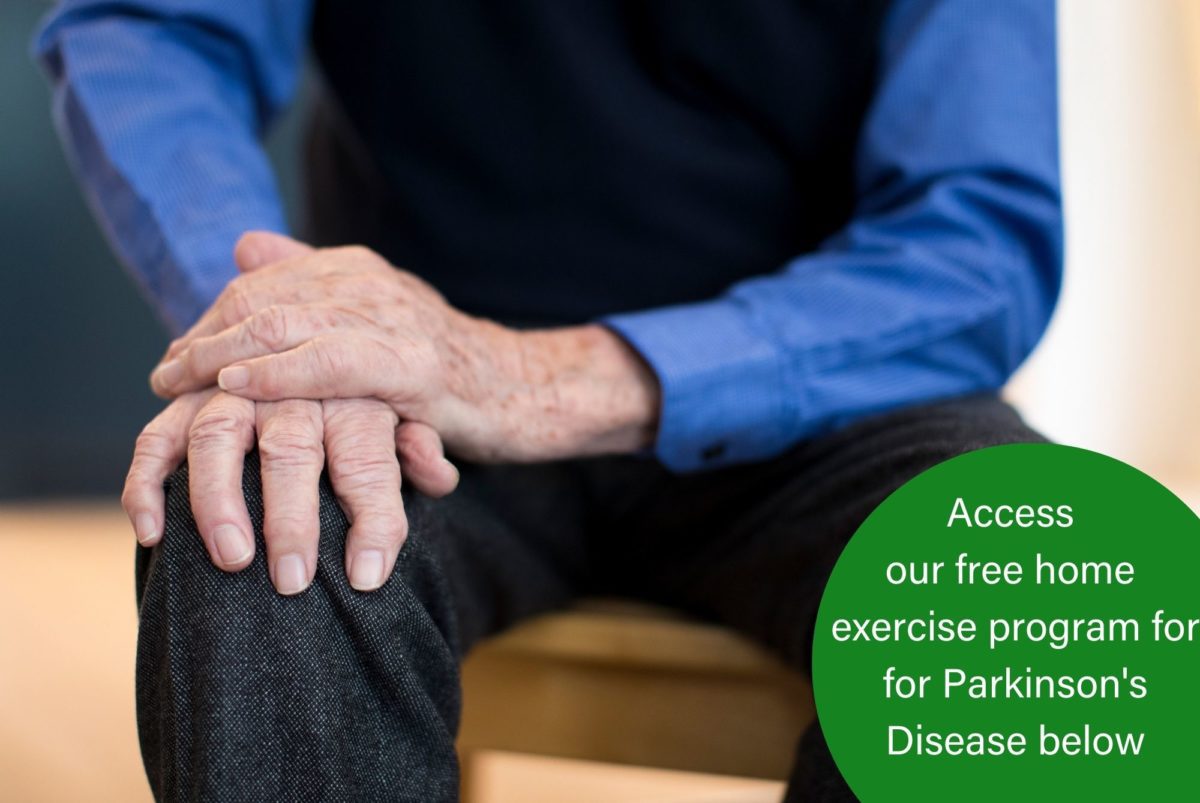Exercises for Parkinson’s Disease

The Best Exercises for Parkinson’s Disease
While exercise is important for everyone, it is even more so for those living with Parkinson’s Disease as it has many benefits. Evidence from systematic reviews and randomised controlled trials shows that exercises for Parkinson’s Disease, when used in conjunction with medication, can not only improve mobility, muscle strength, balance and reduce falls but it also helps to slow the progression of the disease, delay the need to increase medication dosage and decrease motor symptoms:
- Slowness
- Tremor
- Freezing
- Voice
- Dyskinesia
- Dystonia
The best exercises for Parkinson’s Disease are those that have positive effects on mood, fatigue, pain, cognition, constipation and sleep. Sleep is improved by promoting rapid eye movement (REM) in the sleep cycle. Exercise provides a means by which individuals can actively participate in the management of their disease, optimise their abilities, improve their quality of life and retain levels of independence.
The Four Key Ingredients
Exercise programs typically comprise four key ingredients: aerobic and endurance training; strength training; balance training; flexibility training. In addition, functional and task-specific training forms part of a more specialised application of exercise that aims to target functional mobility more specifically, still utilising the aforementioned core components to support the efficient performance of specific tasks, and may facilitate transfer of benefits from core exercise components to better overall functional ability.
Every individual is different. It’s important to remember that although a combination of aerobic, resistance and balance exercises have the best overall effect, you may need to modify each element to suit your unique circumstance.
Aerobic Exercise:
Aerobic exercise is described as continual movement to assist in the improvement of cardio-respiratory function. This includes walking, cycling, swimming and even dancing. Exercising to music specifically has seen some fantastic results in managing Parkinson’s Disease symptoms.
Resistance Exercise:
Maintaining strength is not only important to keep our muscles healthy, it also helps with daily activities like getting off the toilet and getting out of the car. Resistance exercises can be performed using your body weight, light hand weights, resistance bands, various machines found in a gym setting or even using common household items like cans of food. Moving your muscle under a greater resistance promotes an increase in muscle mass.
Flexibility Exercise:
Due to increasing rigidity or stiffness, individuals living with Parkinson’s Disease may sometimes need additional stretching exercises. Stretching of the legs, arms and torso are all important to ensure you can function at your best. Research has shown that exercising in a group setting helps with motivation to continue participation.
Exercise for Neuroplasticity:
Many studies have shown that repetitive exercise is important for individuals living with Parkinson’s Disease as it encourages what is called ‘neuroplasticity’, being the ability to create new neural pathways in the brain. Dual tasking exercises involve conducting two or more tasks at the same time, either two motor tasks at the same time or a motor and cognitive task at the same time. An example of this is the ‘Squat and Stop’ exercise on the exercise program.
Making these new connections in the brain assists with managing the symptoms of Parkinson’s. Our program contains eight of the best exercises for Parkinson’s Disease that you can perform in your home. Register for the course below, and start your journey to better health today. To request additional information on how our exercise physiology Gold Coast services can assist beyond these initial exercises for Parkinson’s Disease, including specially designed group classes, please contact us.
Access Best Exercises for Parkinson’s Disease Program Below
Learn more about Parkinson’s in our Parkinson’s Awareness Month blog post.


